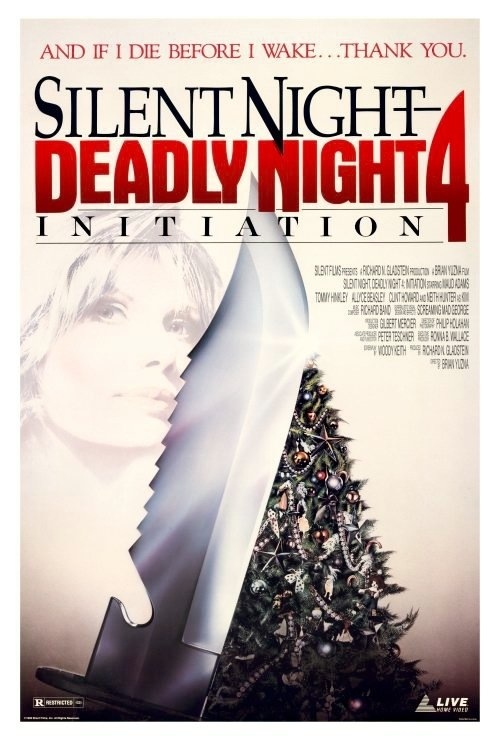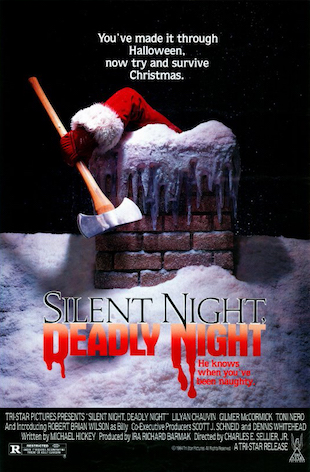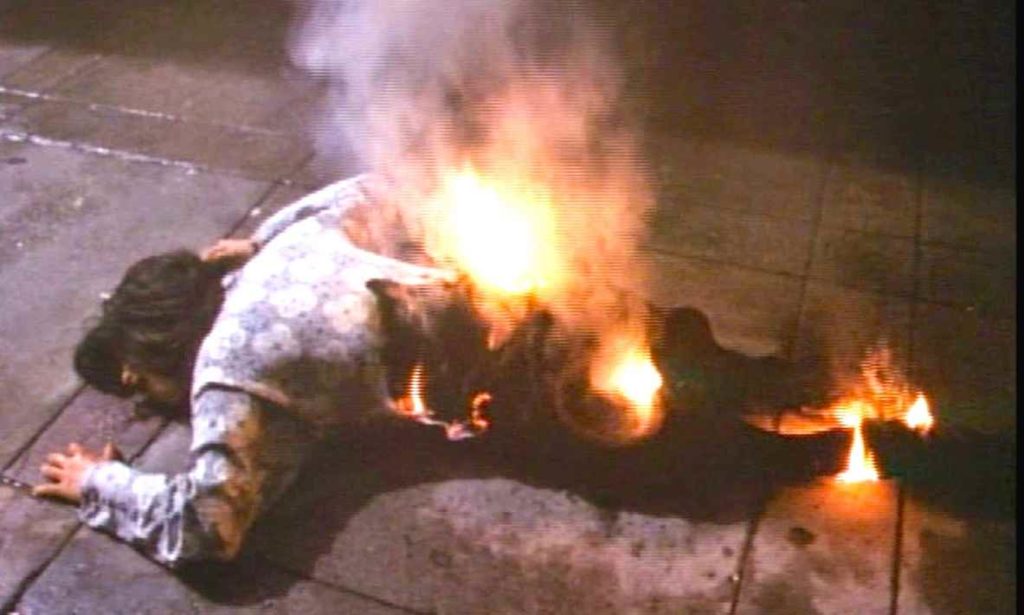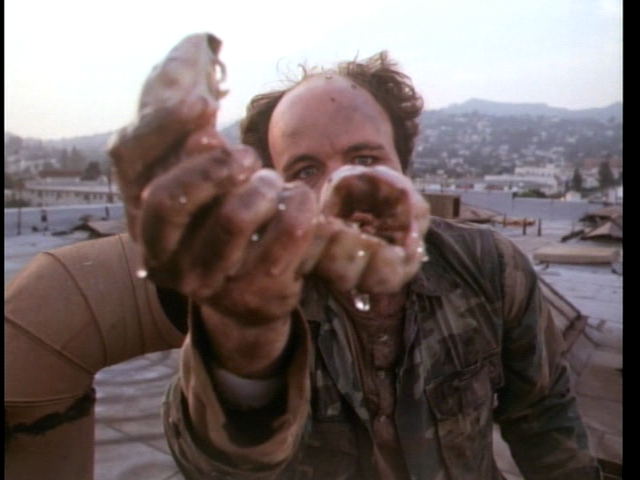
One of the tenets of Cinéma Dévoilé is to judge these films on their own merits; however, it is equally important to gain an understanding of these films’ place within history, and in order to do that, we must first look to the series that spawned them. The slasher cycle that was ignited by the success of HALLOWEEN (1978) has been well-documented in books like: BLOOD MONEY: A HISTORY OF THE FIRST TEEN SLASHER CYCLE by Richard Nowell and GOING TO PIECES: THE RISE AND FALL OF THE SLASHER FILM, 1978-1986 by Adam Rockoff; both of these texts place the waning point of the cycle within the early ‘80s. Fans of the genre know that 1984 gave them a killer that stalked their dreams, but it’s often forgotten that the same week A NIGHTMARE ON ELM STREET (1984) was released was also the week SILENT NIGHT, DEADLY NIGHT (1984) was released into theaters, and subsequently picketed and pulled from screens after two weeks.

The controversy behind SILENT NIGHT, DEADLY NIGHT arose from the image of an axe-wielding Santa Claus — not to mention the content of the film, which sees another Santa Claus-outfitted man raping and murdering a woman. The marketing, particularly the poster of Santa Claus descending a chimney with axe in hand, served the film well: it made back double its budget in the two weeks it was in theaters. SILENT NIGHT, DEADLY NIGHT PART 2 (1987) was made for $100,000, and was almost entirely made up of footage from the first film; it made its money back, and so a sequel was fast to cash in on the newly-established franchise: SILENT NIGHT, DEADLY NIGHT 3: BETTER WATCH OUT (1989). Part 3 brought back our Santa Claus killer from the dead. He’s now a braindead test subject who can only be reached through the use of a blind psychic — it’s interesting to note how it only took three sequels before the script had to jump a shark to keep the series alive, a common theme we’ll explore in depth through Cinéma Dévoilé. However, making do with a script that was rejected for Part 3, the series’ fourth entry followed in 1990.
SILENT NIGHT, DEADLY NIGHT 4: INITIATION is so far removed from the rest of the series that when author Jon Towlson speaks on the film during his chapter dedicated to director Brian Yuzna in SUBVERSIVE HORROR CINEMA: COUNTERCULTURAL MESSAGES OF FILMS FROM FRANKENSTEIN TO THE PRESENT, he refers to the film only as INITIATION; the obvious reason for why this film seems so distant from the rest of the series is the lack of a killer Santa. Instead, INITIATION focuses on wanna-be reporter Kim Levitt (Neith Hunter) as she attempts to achieve praise and respect within a chauvinist male environment by getting to the bottom of a bizarre falling/burning death that has been labeled a suicide. In her investigation of the building from which the victim fell off, she meets occult bookseller Fima (Maud Adams), as well as homeless bum Ricky (Clint Howard). Fima is revealed to be the head of a coven of witches that has set its sighst on Kim, using drugs and magic to create a hallucinatory viewpoint which the filmgoing audience shares with the wannabe reporter. Fima preaches a form of extremist feminism, which calls for either the murder of a male child by Kim, or for her life — the true cause of the earlier death.

The plot of INITIATION plays out more like a sequel to Brian Yuzna’s SOCIETY (1989) than SILENT NIGHT, DEADLY NIGHT 3; in part, this arises from the screenplay written by Woody Keith, who wrote SOCIETY with Rick Fry, and the special effects by Screaming Mad Georgen who had worked on SOCIETY, as well as BRIDE OF RE-ANIMATOR (1989) and the upcoming Cinéma Dévoilé film CHILDREN OF THE CORN III: URBAN HARVEST (1995). INITIATION attempts to make a positive statement about women’s liberation from a male-dominated societ,y but ends up shooting itself in the foot and coming off as offensive in its portrayal. Thankfully, the film does not hinge upon its writing, but upon its effects, which feature bending fingers that would have belonged in SOCIETY’s famous “Shunting” sequence, giant bugs, scenes of pregnancy horror, and some brutal stabbings. The film also features another recurring theme of Cinéma Dévoilé: terrible acting. Maud Adams is playing up her role with schlock charm; Neith Hunter screams every line; the men of the office can’t read a line to save their lives. Of the cast, only Clint Howard manages to bring any skill to task. It’s this combination of inventiveness with substandard elements that makes Cinéma Dévoilé what it is.
ENJOYMENT: 7/10
CAMP: 6/10


Tags: Allyce Beasley, Brian Yuzna, Cinema Of The Devoid, Clint Howard, Columns, Holidays, Horror, Maud Adams, Neith Hunter, Reggie Bannister, Richard Band, Santa Claus, Screaming Mad George, The 1990s, VHS, video


No Comments